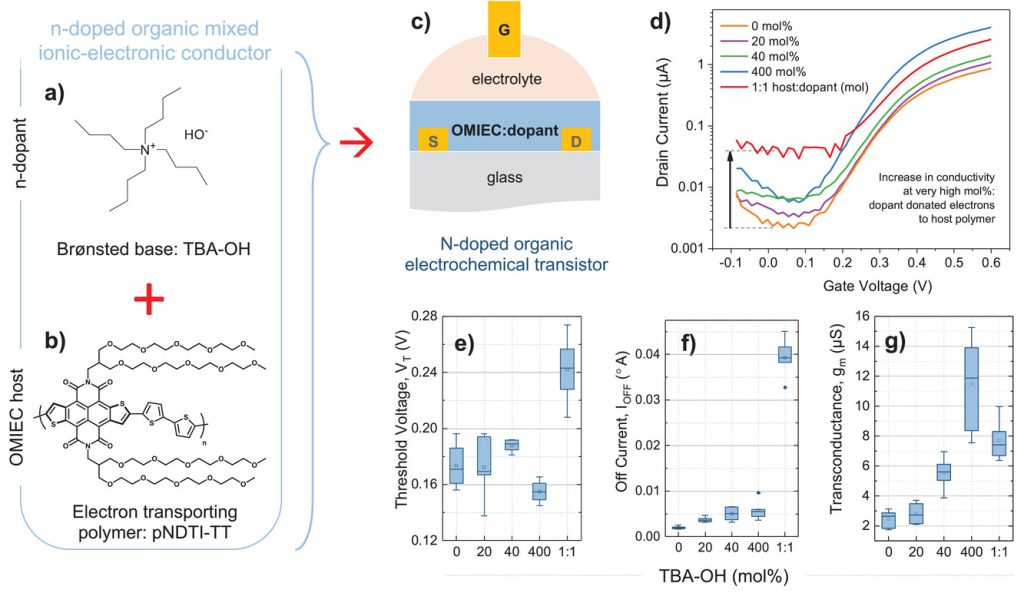Organic semiconductors and electrochemical transistors promise to enable new generations of low-cost, mechanically flexible, and wearable electronic devices. With this novel chemical doping process discovered by the Alexandra Paterson team and collaborators, this promise is one step closer to fulfillment.
A publication titled, “New Chemical Dopant and Counterion Mechanism for Organic Electrochemical Transistors and Organic Mixed Ionic–Electronic Conductors” appeared in Advanced Science, and several KY NSF EPSCoR supported researchers contributed, including Gehan S. Rupasinghe, Maryam Shahi, Paula Alarcon Espejo, Kenneth R. Graham, Chad Risko, and Alexandra F. Paterson, all from the University of Kentucky (UK). There were other UK affiliated researchers connected to this publication, as well as collaborators across the US.
This is the first publication released by Paterson’s lab, a new hire from 2021 on the Track-1 award #1849213: Kentucky Advanced Manufacturing Partnership for Enhanced Robotics and Structures, with additional support provided from the Graham and Risko Labs through DMR award #1905734: Disentangling Relationships among Dopant Structure, Dopant and Polymer Energetics, Thin-Film Morphology, and the Electrical Properties of Doped Conducting Polymer Films.

Organic mixed ionic–electronic conductors (OMIECs) have varied performance requirements across a diverse application space. Chemically doping the OMIEC can be a simple, low-cost approach for adapting performance metrics. However, complex challenges, such as identifying new dopant materials and elucidating design rules, inhibit its realization. Here, these challenges are approached by introducing a new n-dopant, tetrabutylammonium hydroxide (TBA-OH), and identifying a new design consideration underpinning its success. TBA-OH behaves as both a chemical n-dopant and morphology additive in donor acceptor co-polymer naphthodithiophene diimide-based polymer, which serves as an electron transporting material in organic electrochemical transistors (OECTs).
Read the full publication: https://onlinelibrary.wiley.com/doi/10.1002/advs.202207694




